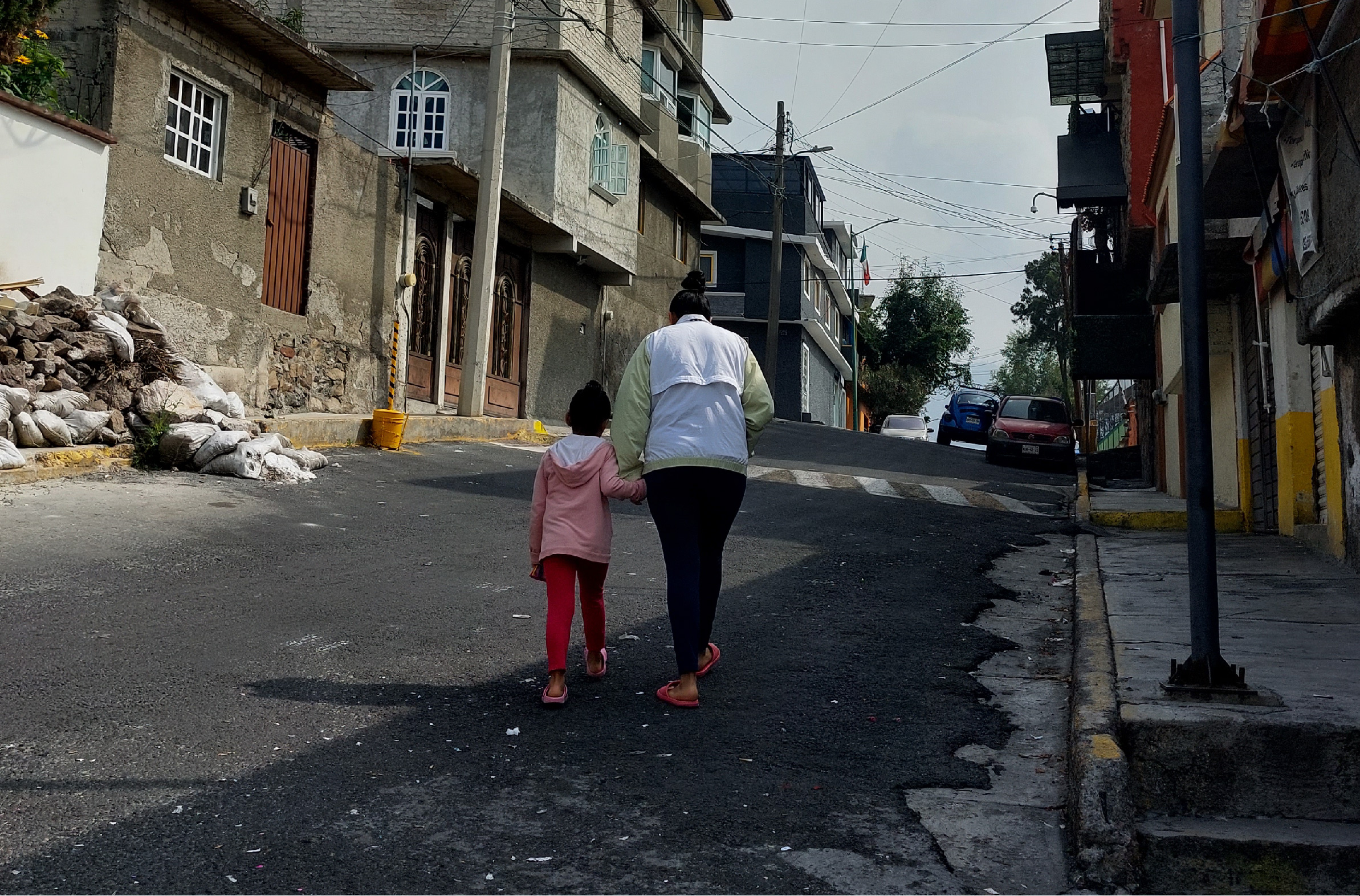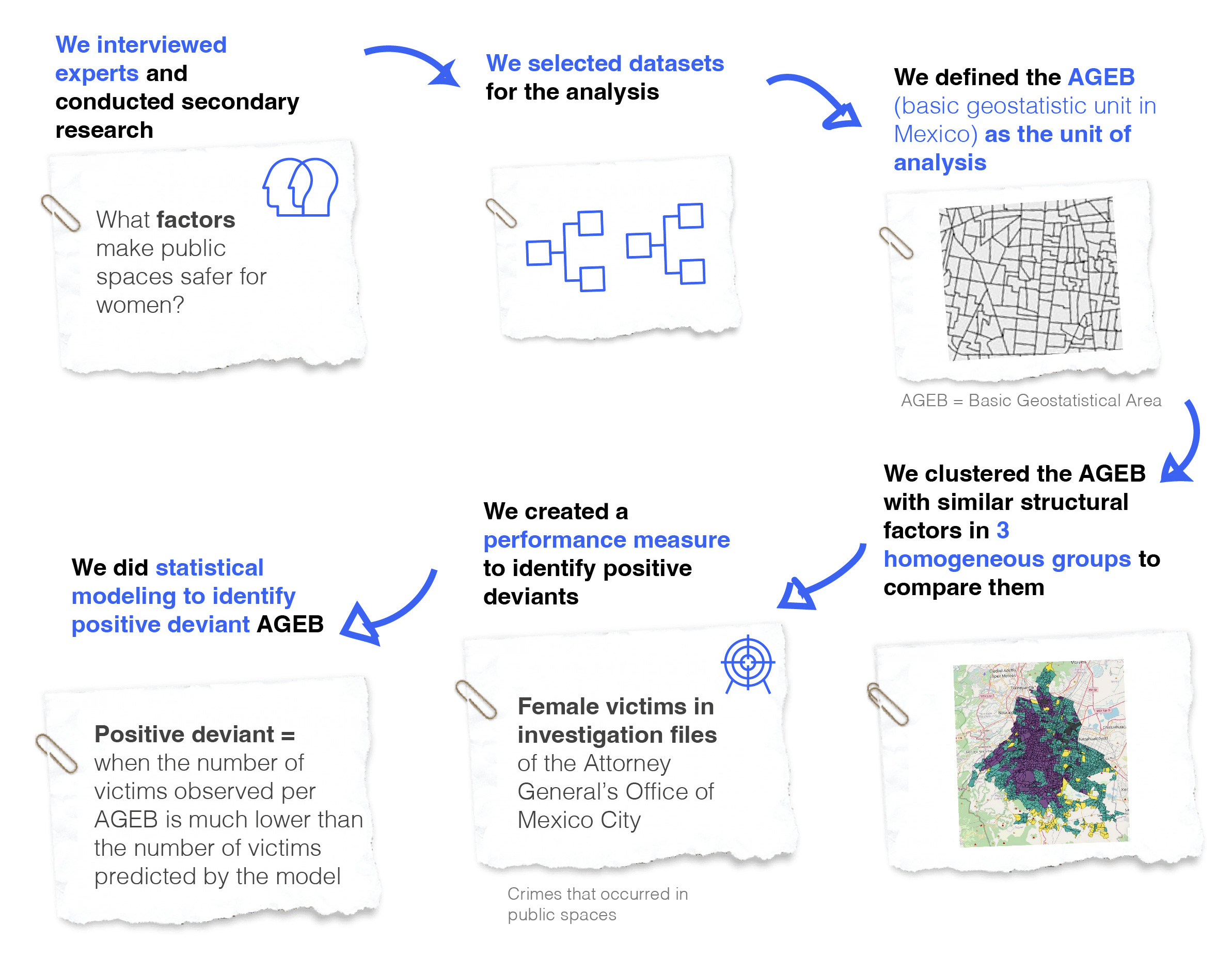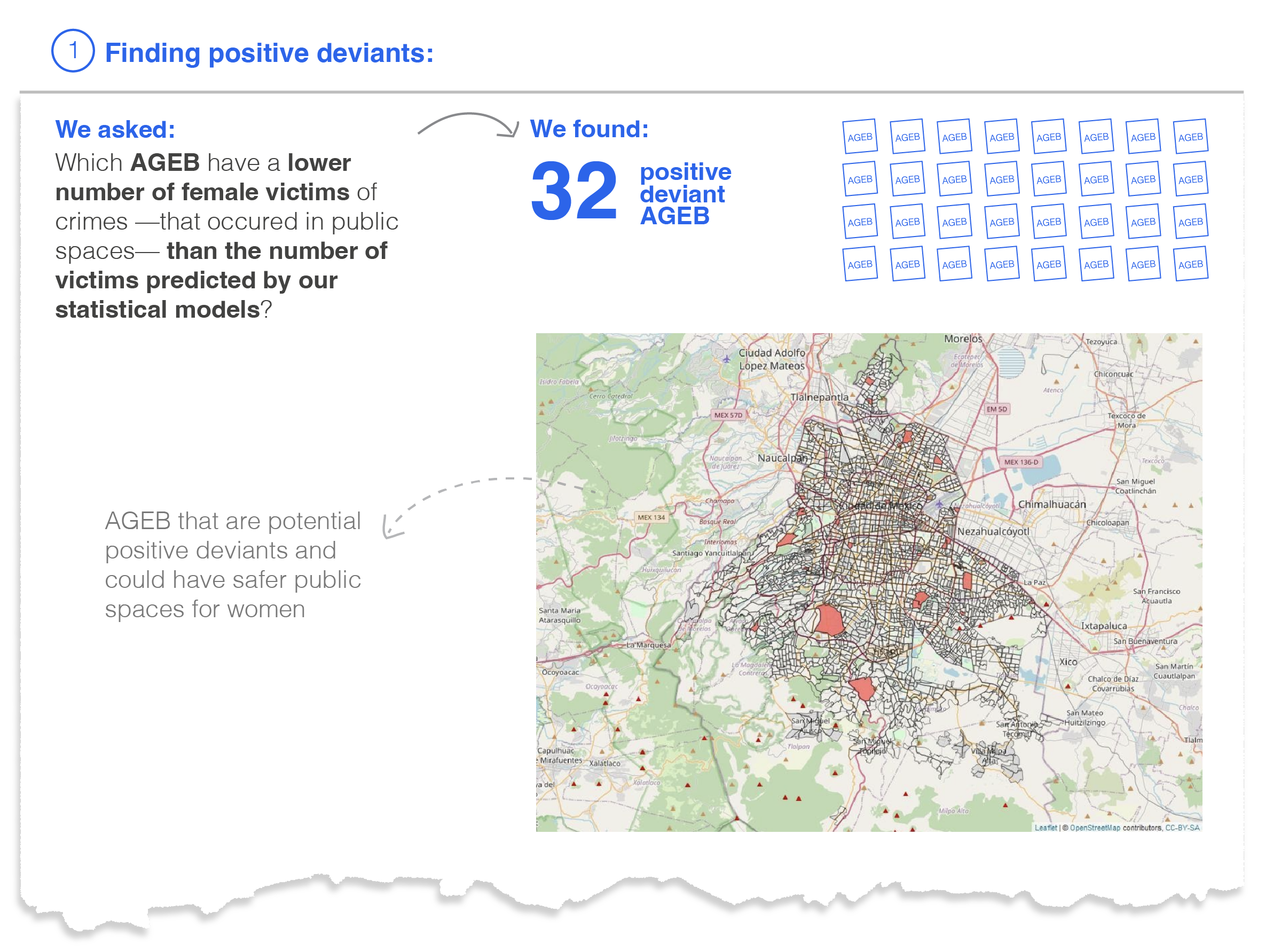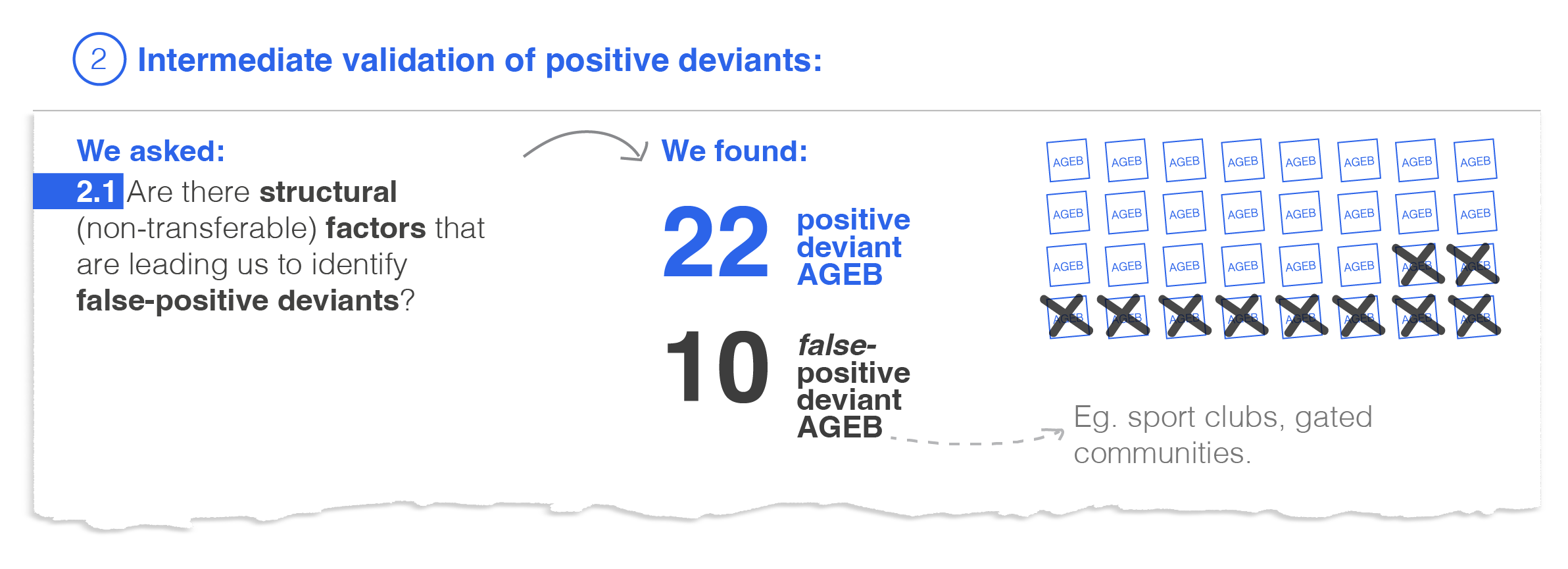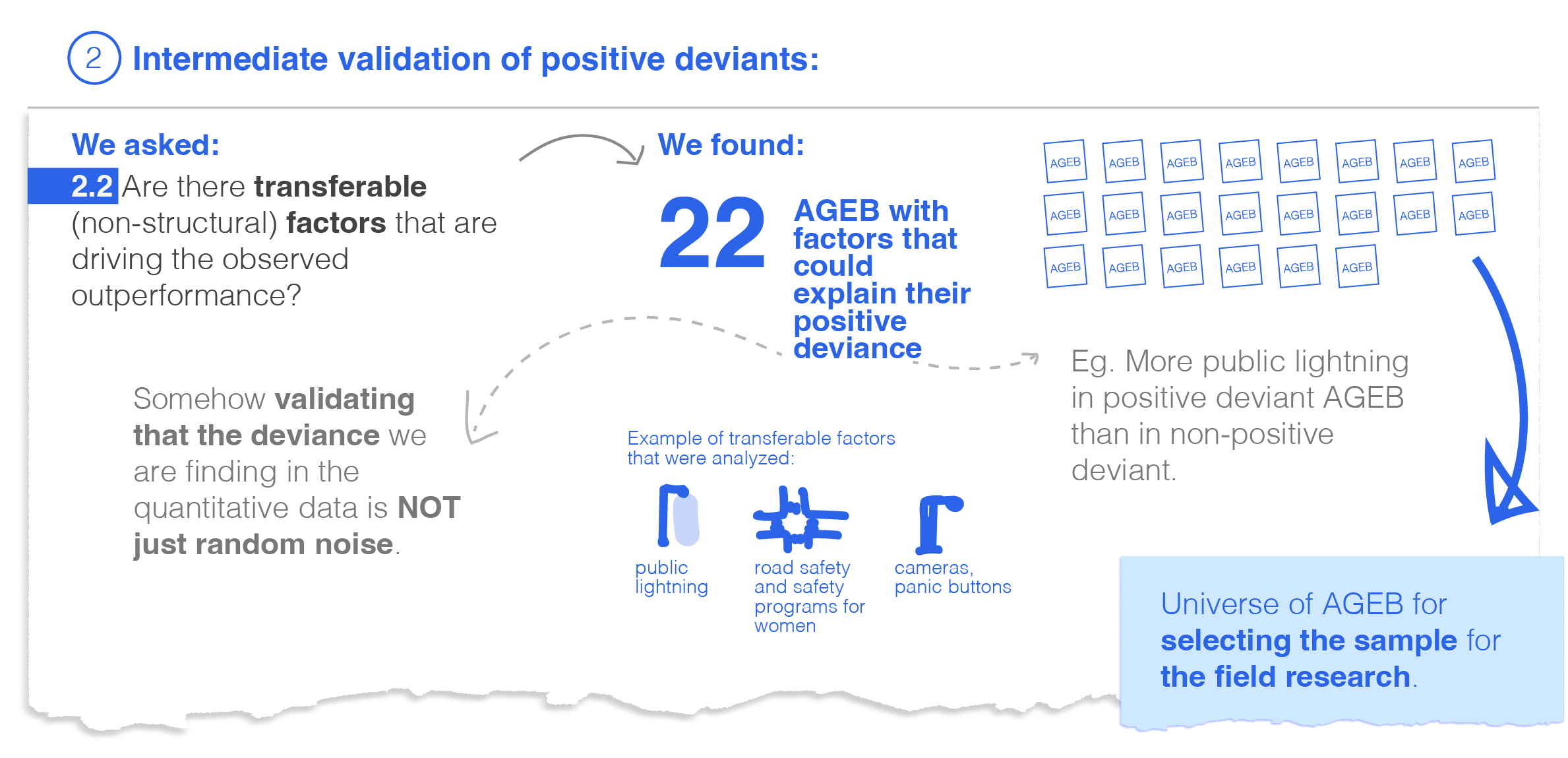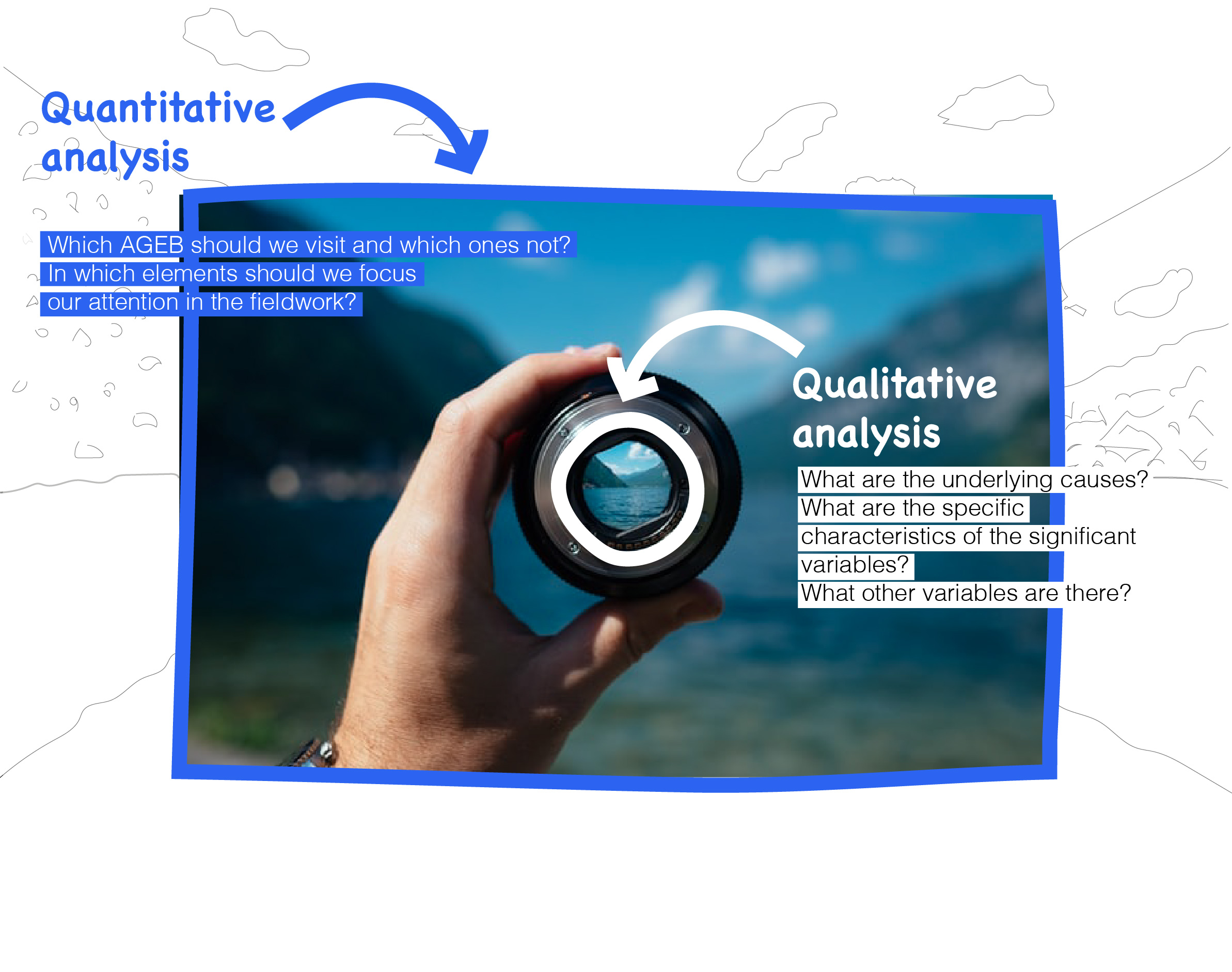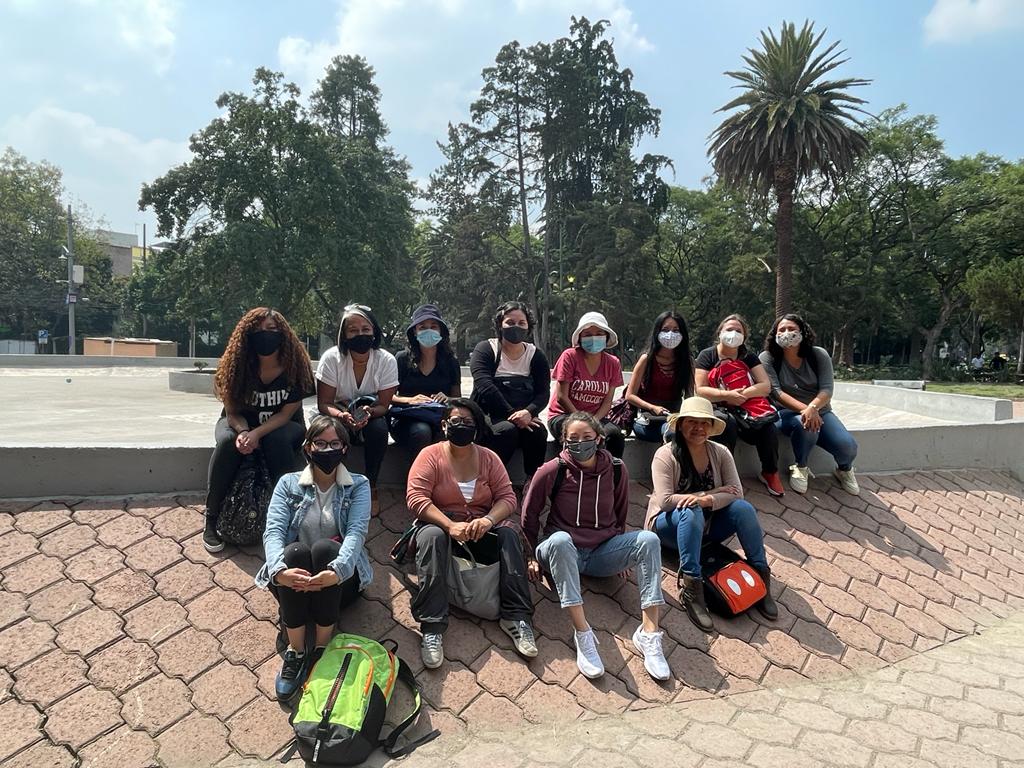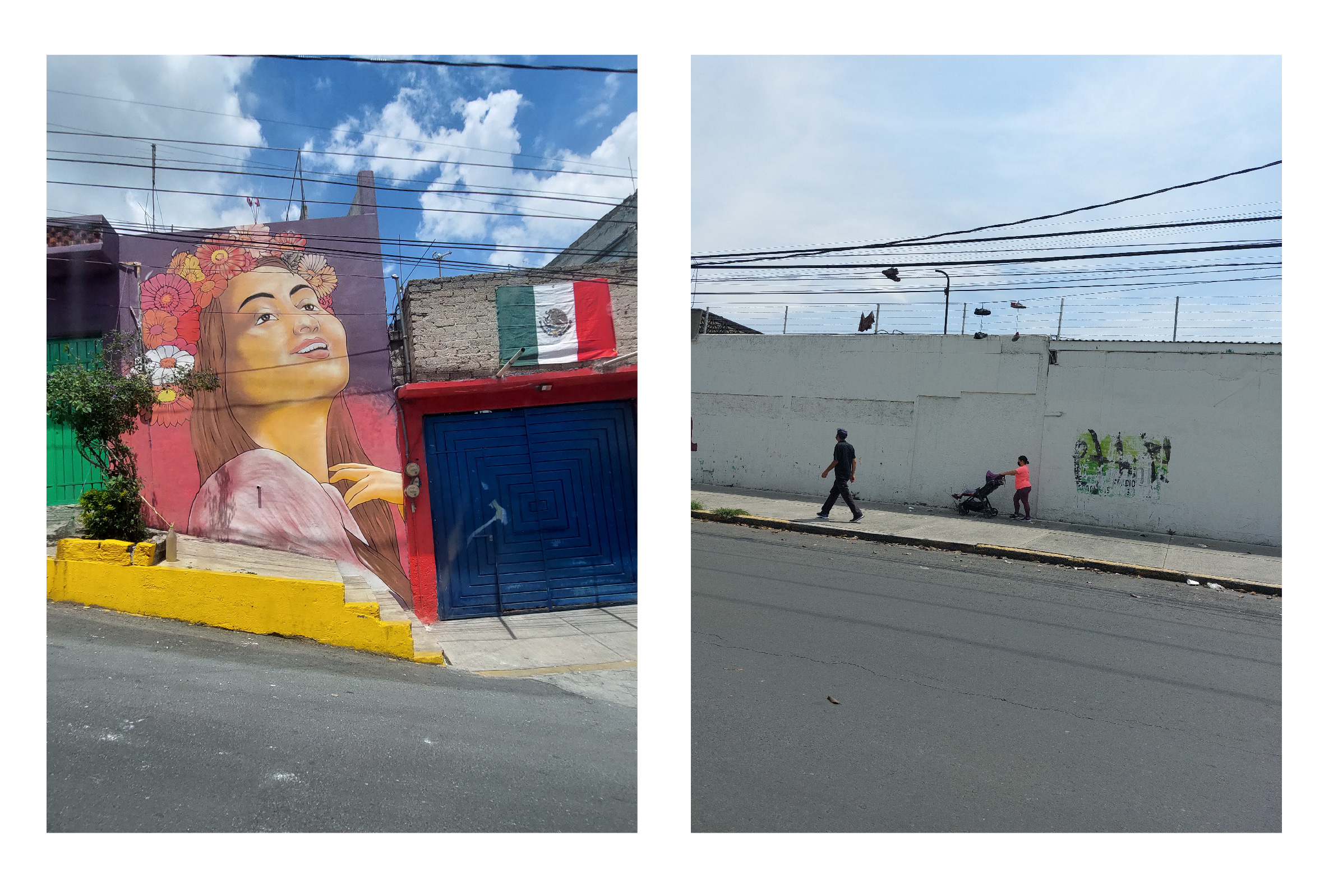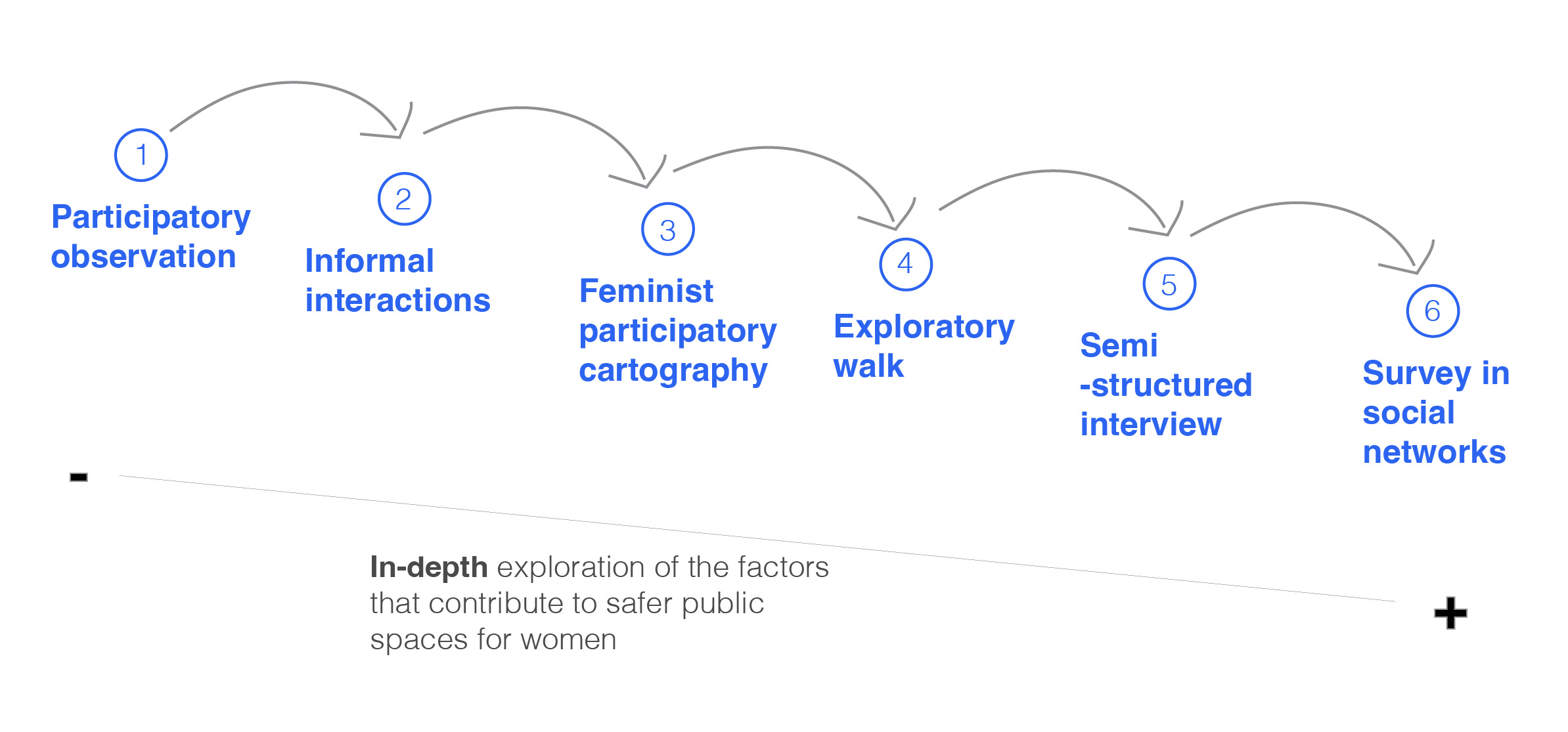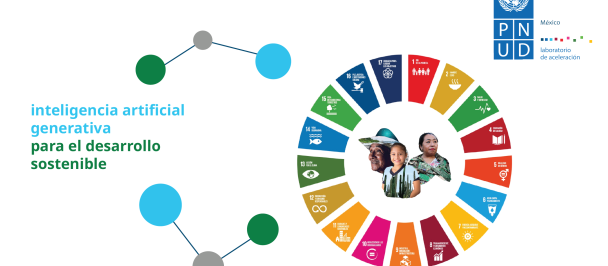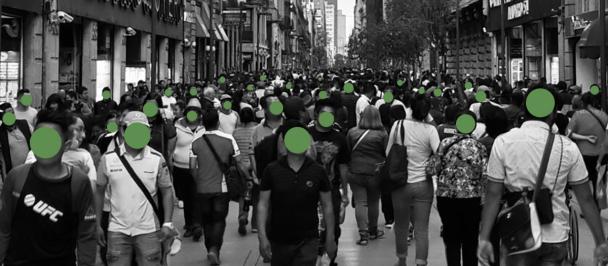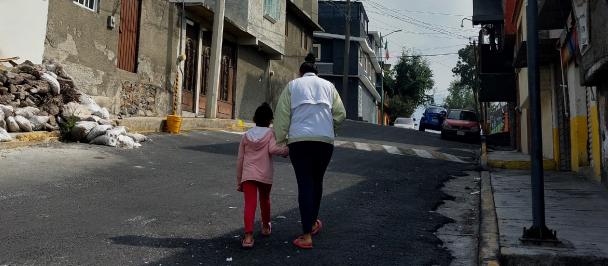Mexico City. GIZ-UNDP.
By: Alejandra Cervantes, Technical Advisor, Agenda 2030 Initiative, GIZ Mexico; Daniela Torres, Technical Advisor, Agenda 2030 Initiative, GIZ Mexico; Gabriela Ríos, Head of Exploration, UNDP Mexico Accelerator Lab.
In the first installment of this series, we recounted our initial steps in using the Data Powered Positive Deviance (DPPD) method to find public spaces in Mexico City that were safer for women than other spaces with similar characteristics. This included clustering AGEBs—the basic geostatistical areas used in Mexico City—into three homogenous groups and using the number of female victims of crimes—that took place in public spaces—in investigation files as our performance measure to identify positive deviants. In this second installment, we share our latest progress.
GIZ and the United Nations Development Programme (UNDP) in Mexico are collaborating with the Government of Mexico City to carry out this project, particularly, through the Ministry of Women, the Digital Agency for Public Innovation (ADIP) and the Center of Command, Control, Computing, Communications and Citizen Contact (C5).
Recap of the first steps of the pilot, recounted in the first blog post of this series.
Finding positive deviants: Which public spaces are safe(r) for women?
One of the strengths of the DPPD method is that it encourages a focus on outliers— communities, or in our case public spaces, where uncommon grassroots solutions may be found—at scale—by using digital data that cover large geographic areas and time frames. We say “may be found” because field research is necessary to confirm if an outlier in the data is indeed a positive deviant.
We analyzed the occurrence of crimes against women (measured through the female victims in investigation files of the Mexico City Attorney General's Office) in 2,414 AGEBs (by its acronym in Spanish, which means Basic Geostatistical Areas). We identified as outliers areas with a lower number of actual victims than what we could predict using statistical modeling. 32 AGEBs met this condition, implying they likely included safer spaces for women.
Validation: How do we know if a positive deviant AGEB is one we can learn from in the field?
The conventional positive deviance approach assumes that in every community there are individuals or groups that develop unusual solutions to cope with the challenges they face, unlike their peers, who live in similar conditions and have access to similar resources. These solutions are the ones we seek in our outlier AGEBs; and finding them qualitatively in the field will ultimately confirm the positive deviant nature of those AGEBs. However, before going to the field, the DPPD method prescribes an initial validation step to help better target investigations. This step is a useful way to assess whether the deviance found in the data is due to random noise or whether it is indeed due to signals of outperformance that can be confirmed through qualitative research.
In our case, two key questions drove this initial validation step:
1. Are there structural (non-transferable) factors that might lead us to identify “false” positive deviants?
To answer this question, we looked for obvious structural characteristics (e.g. specific land uses and facilities) that might explain the measured deviance of AGEBs using OpenStreetMap. Such characteristics are indeed often hard to transfer from one location to another, and therefore are less relevant in a positive deviance approach. We discarded places such as the Heroic Military Academy, gated communities with restricted entrances, and sports clubs—places that all had low crime rates, but were not open, public spaces. Removing them reduced our list of AGEBs marked for field visit from 32 to 22.
2. Are there transferable (non-structural) factors that we can identify using secondary data that might drive the observed outperformance (somehow validating that the deviance we are finding is not just random noise)?
To answer this question, we looked for other logical explanations to the AGEBs’ measured deviance that might be identifiable in existing data, and that could offer interesting learning opportunities in the field.
We compared the existence of transferable variables—conditions or characteristics that contribute to the safety of women and that could be replicated in other areas of the city through interventions—in the positively-deviant AGEBs versus the AGEBs that are not outliers. This analysis included data on street lighting, public programmes that aimed to promote women’s safety (Safe Paths) and road safety (Safe Intersections, Safe Passages), and totems with cameras and panic buttons.
We found for example, that there was more street lighting in the outlier AGEBs than in the non-outliers in one of our homogeneous groups (group 1[1]) which led us to believe that the distinction between outliers and non-outliers was indeed driven by signals of positive deviance—since street lighting is known to increase public safety.
Using quantitative findings to refine the focus in the field
These secondary analyses—comparing outliers with non-outliers—also led us to frame more refined research questions for our qualitative work.
For example, as mentioned above, we found a greater presence of street lighting in the positive outliers of our homogeneous group 1, but we also found Safe Intersections—which include car and pedestrian traffic lights, or signals for pedestrian crossings. This raised the questions: What particular characteristics should street lighting have to contribute to the safety of women in public spaces? Could Safe Intersections play a role in the safety of female pedestrians?
We further found that crimes in the positive outlier AGEBs of our homogeneous group 2[1] occurred more during weekdays, when in the other AGEBs they occurred more during weekends. This raised questions such as: What places do people frequent on weekdays versus weekends in AGEBs that seem to be positive deviants and in those that do not? Could there be dynamics between the use of space and the occurrence of crimes?
On the other hand, in our linear regression analysis for group 1, we found that variables such as the presence of informal commerce, financial services, and bars and restaurants are significant and predict the occurrence of crime. This means, the greater the presence of these variables, the more crimes against women. Except in the AGEBs that turned out to be positive deviants, which actually have a greater number of these predictors of crime compared to the AGEBs that are not positive deviants. In other words, although positive deviants have more informal commerce, financial services, and bars and restaurants, they have fewer crimes than what the model predicted.
These insights helped us to formulate some preliminary questions for our fieldwork, such as: What are the particular characteristics of informal commerce in positively-deviant AGEBs? Could these characteristics be related to safety in public spaces? Are there specific conditions that bars and restaurants in positively-deviant AGEBs trigger that may be linked to women's safety?
Throughout this process, we came to appreciate how the data-powered component of the DPPD method offered not only the possibility to cover large geographic areas and to filter them down to those most relevant for qualitative inquiry, but also how it helped refine the variables we needed to study in the field.
Data Powered Positive Deviance, quantitative analysis serves to frame the photograph and qualitative analysis to focus it, complementing each other to generate a more detailed image.
Fieldwork design
The qualitative phase of the DPPD method serves to investigate the aspects of outperformance for which digital data are not available. For example, it is essential for understanding how the occupation of public spaces according to the time of day, the interactions between people, or the perception of safety impact women's actual safety in public spaces.
Our pilot is currently in this phase. We are working with Cohesión Comunitaria e Innovación Social A.C. (CCIS); we have completed the data collection; and we are in the process of analyzing it, and deriving recommendations. In this section, we share our study design, but not our findings. We will report on these in our next blog post.
a. Sample selection
We ended the initial validation step with a list of 22 (potential) positively-deviant AGEBs. We further narrowed these down to 10. We believed this was necessary to increase our focus on the tangible and intangible factors that made public spaces more or less safe for women.
We then added 3 (potential) negatively-deviant AGEBs to the list—AGEBs in which a higher number of victims was reported than what we could predict using statistical modeling; and 3 AGEBs that were neither positive nor negative outliers. We expected this would allow for a more complete analysis, as we will be able to compare conditions between AGEBs with contrasting performances in terms of the crimes they report.
We selected the sample of 16 AGEBs based on the distribution among boroughs, homogeneous groups, severity of crimes and interventions in public space by the Government of Mexico City. The latter was made possible thanks to data provided by the Ministry of Women. By choosing AGEBs that have public programs, we seek to generate learnings that add to the government's current efforts. The final sample was also informed by initial exploratory visits where we inquired about community aspects that could contribute to a better selection of the AGEBs by offering interesting learning opportunities. For example, in the exploratory visit to the AGEB in the neighborhood of Emiliano Zapata we found recent mural work with women, an aspect that would be interesting to explore in the field; consequently, that AGEB was included in the sample.
b. Design of qualitative research techniques
For the data collection in the field, we designed a set of six instruments and techniques to identify and analyze the characteristics or conditions, both tangible (urban infrastructure such as lightning, green areas, etc.) and intangible (who occupies the space, at what time, etc.), that made public spaces safer for women who live, work, study, visit, or transit through the 16 AGEBs in our sample.
These techniques include: participant observation, informal interactions, feminist participatory cartography, exploratory walks, semi-structured interviews and a survey in social networks. The initial techniques were designed to identify general characteristics that could contribute to women’s safety in public spaces, while the latter were designed to delve deeper into the specificities.
Next steps
In the coming weeks we will finalize the analysis of the fieldwork findings. With these results, we hope to have a better understanding of the characteristics that contribute to making public spaces safer for women in specific contexts. Subsequently, we will share this information with strategic allies to generate ideas for interventions to create safer public spaces for women.
Among the stakeholders we will reach out to are Mexico City’s Ministry of Women; Ministry of Works and Services; Ministry of Citizen Security; the Center of Command, Control, Computing, Communications and Citizen Contact; and the Digital Agency for Public Innovation, with whom we have shared the progress of this pilot on previous occasions and to whom we are grateful for their feedback and ongoing support.
We will soon share the results of the fieldwork research in this space. If you want to learn more about our work, please contact us.
This pilot would not be possible without the valuable collaboration of Codeando México and Cohesión Comunitaria e Innovación Social A.C., as well as the partners of the Data Powered Positive Deviance global initiative. With special thanks to Andreas Pawelke, GIZ Data Lab, Basma Albanna, University of Manchester, Adriana Alvarado, intern of UNDP Mexico Accelerator Lab and Jeremy Boy, Data Scientist, UNDP Accelerator Labs for their comments and contributions to this blogpost.
About
The Data Powered Positive Deviance initiative was established on the belief that lessons on how to tackle complex sustainable development challenges are best learned from the people who face those challenges every day. It is with this mindset that the GIZ Data Lab, the University of Manchester Centre for Digital Development, and the United Nations Development Programme Accelerator Labs are conducting a series of pilots in different countries and domains to uncover effective, locally developed practices and innovations as a response to development challenges.
Contact
- UNDP Mexico Accelerator Lab: Gabriela Ríos: gabriela.rios@undp.org
- GIZ Data Lab: Catherine Vogel: datalab@giz.de
- University of Manchester: Basma Albanna: basma.albanna@manchester.ac.uk
- UNDP Accelerator Labs: Jeremy Boy: jeremy.boy@undp.org
- GIZ 2030 Agenda Initiative in Mexico: Alejandra Cervantes: alejandra.cervantes@giz.de
Referencias:
[1] Homogeneous group 1: AGEBs that are on average less densely populated than group 2, but much more densely populated than group 3, on average receive more daily trips and have lower marginalization conditions.
[1] Homogeneous group 2: AGEBs that on average are the most densely populated, those that receive the fewest daily trips and in all marginalization indicators show worse conditions than group 1, but better than group 3.

 Locations
Locations
